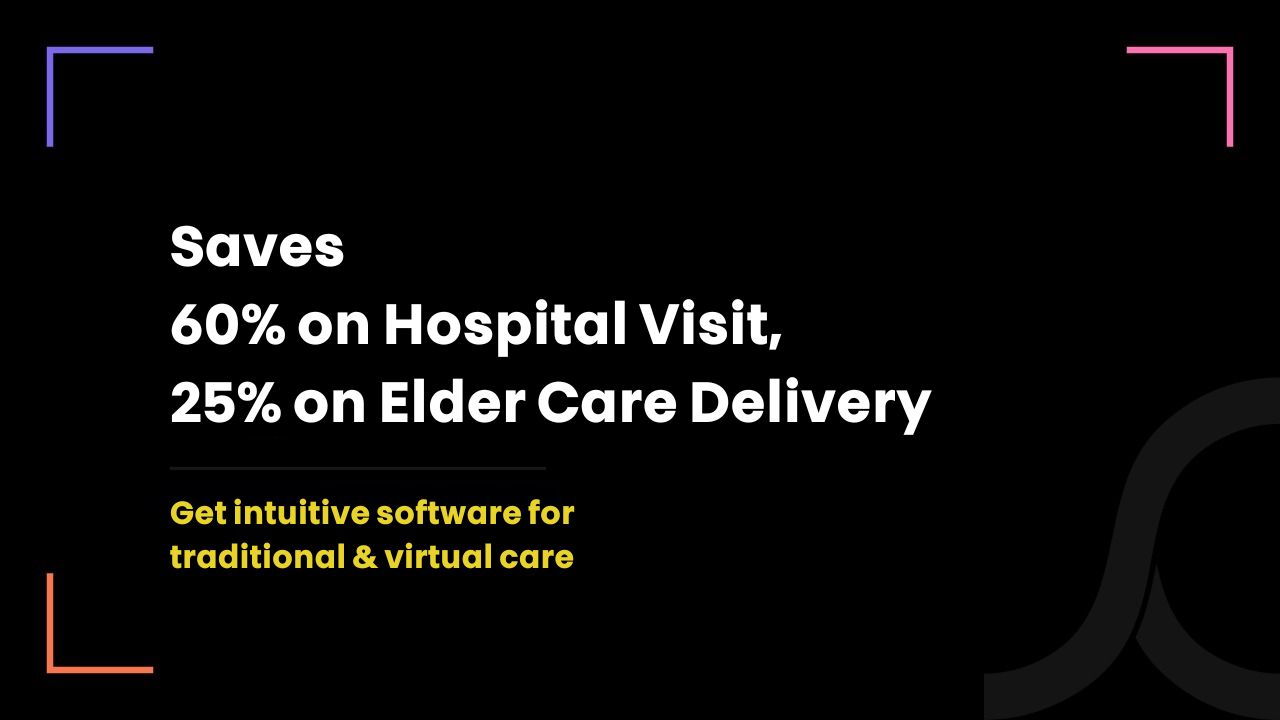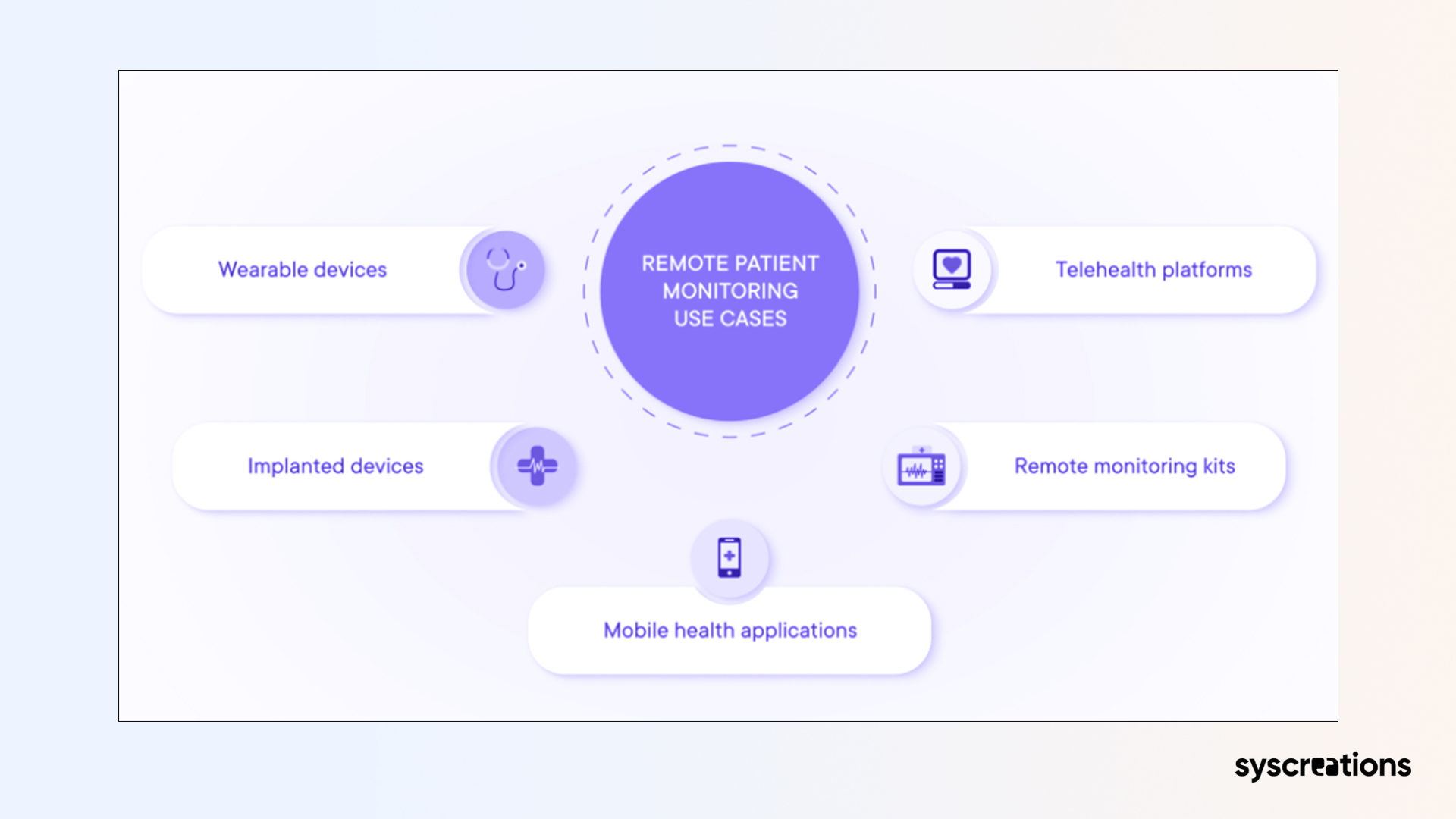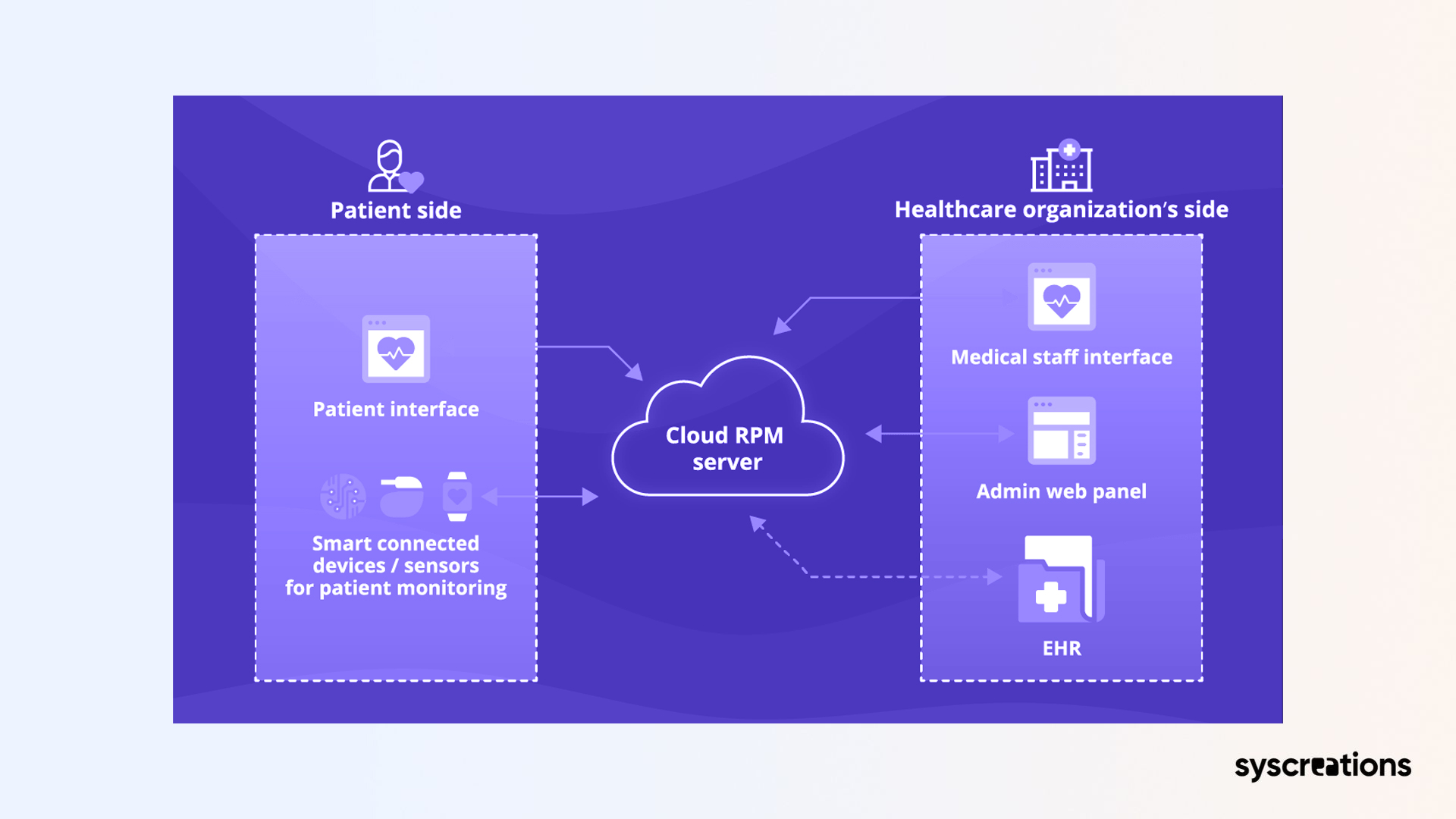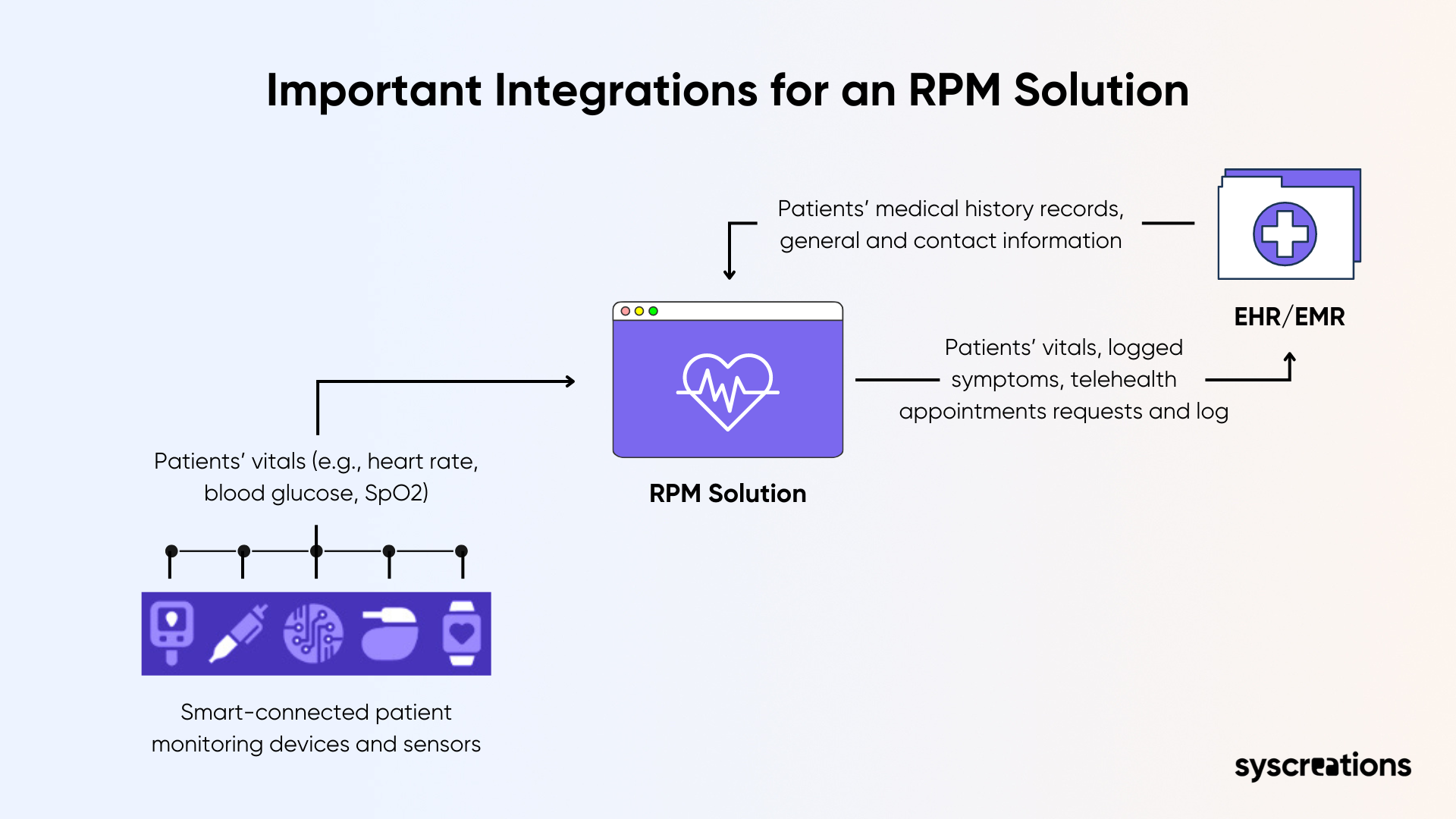How to Build Remote Patient Monitoring Software in 5 Steps

1 year ago
In recent years, Remote Patient Monitoring (RPM) has made rapid headway into the US healthcare system.
Do you know?
The global remote patient monitoring market is estimated to reach USD 117.1 billion by 2025, up from USD 23.2 billion in 2020, at a CAGR of 38.2%.
This technology is being welcomed by both patients and physicians.
According to industry experts, it has the potential to virtualize $250 billion in yearly healthcare spending.
An opportunity to significantly improve the healthcare system's cost efficiency.
What Is Remote Patient Monitoring Technology?
A healthcare technology that enables physicians to monitor a patient's health data outside of regular healthcare settings.
This can take place at a patient's home, in a remote location, or anywhere with an internet connection.
It typically involves the use of digital devices, wearables, and sensors to gather and communicate real-time health data to medical professionals.
Insights into RPM Technology
Sensors & Wearables
RPM devices include wearable technologies, sensors, and monitors that collect various health data. These could include blood pressure cuffs, glucose meters, pulse oximeters, and smartwatches.
Data Transmission
RPM devices are capable of securely transmitting data via the internet or specialized networks. This ensures that the patient's information is both accurate and secure.
Connectivity
Connectivity options include Bluetooth, Wi-Fi, and cellular networks, which allow for seamless data transfer and remote monitoring.
Health Data Types
- Vital signs: RPM measures important vital signals such as heart rate, blood pressure, temperature, and oxygen saturation levels.
- Chronic illnesses: It monitors specific data associated with chronic illnesses, such as blood glucose levels in diabetes patients.
- Symptoms and behavioral data: RPM can also track and record symptoms, medication adherence, and lifestyle factors like exercise and sleep patterns.
Remote Patient Monitoring Use Cases

1. Wearable devices: Track vital signs, provide real-time data.
2. Implanted devices: Monitor internal conditions like glucose, heart rhythm.
3. Mobile health apps: Log data, provide reminders, communicate.
4. Remote monitoring kits: Measure health metrics at home.
5. Telehealth platforms: Enable remote consultations, diagnostics, follow-up care.
Benefits of RPM for Healthcare Providers
1. Reduce Clinical Staff Shortages & Improve Staff Productivity
Remote patient monitoring allows healthcare providers to emphasize quality of service delivery.
It enables them to tailor their care to each patient and case while keeping a close eye on their real-time health status.
Several remote patient monitoring (RPM) solutions can interact with physicians' electronic health records (EHR) systems, reducing the danger of document duplication.
2. Enhanced Patient-clinician Relations
Remote patient monitoring (RPM) solutions help to preserve good relationships between patients and primary care providers by making it easier for patients to engage with their doctors, nurses, and other clinical personnel.
Furthermore, given the demands and obstacles associated with chronic care management, that relationship is not only a source of comfort for patients and their families but also an ideal way to involve patients in their treatment plan.
3. Increased Net Patient Revenue
When compared to typical in-person visits, virtual care services are less expensive.
Your net revenue will increase due to enhanced workflow efficiency, staff productivity, and fewer administrative costs.
4. Encourages Data-driven Clinical Decision Making
Remote patient monitoring (RPM) also helps physicians gain a better clinical picture of their patient’s conditions in between in-person visits to the office.
It also provides them with tools to help them deliver care more effectively.
Want to Build Remote Patient Monitoring Software? Let’s Help You
We are SyS Creations, a healthcare-focused IT company based in Ontario.
Our 50+ team members specialize in enterprise healthcare documentation, consulting, app design, bespoke product development, testing, compliance integration, maintenance, and support.
If you want to empower RPM in your practice, we’re here to help you.
Architecture of Our Remote Patient Monitoring System

1. Smart Connected Devices or Sensors
To gather patient vitals (e.g., body temperature, blood pressure, perspiration) and send them via connectivity protocols (e.g., Wi-Fi, NFC) to the cloud RPM server for further analysis.
2. Patient Interface
A mobile application allows patients to examine their health metrics, report their symptoms, receive notifications for probable medical device failures, request a video consultation with a doctor or nurse, and so on.
3. Cloud RPM Server
To store, process, and analyze transferred medical data, combine gathered vitals with data from symptom and lifestyle logs, as well as PHI from EHR (e.g., medical history, prescribed medications), in order to detect changes in patient status and determine their causes.
4. Medical Staff Interface
To give medical staff (e.g., nurses, care coordinators, advanced practice nurses, and physicians) access to data on patients' health status and notify them to observed irregularities in patients' vitals (e.g., severe hypoglycemia, extended tachycardia) or potential medical device difficulties.
5. Admin Web Panel
To manage user role settings for medical staff and patients (e.g., enabling or restricting access to monitoring data), add and confirm virtual appointment requests, update medical staff schedules, and so on.
Features of Our Remote Patient Monitoring Solution
1. Real-time Patient Health & Lifestyle Tracking
- Device-based vitals collection for early disease detection.
- Patient symptom logging (e.g., shivering, nausea).
- AI chatbots for symptom interviews.
2. RPM Data Analytics & Reporting
- Analyzing patient vitals against set norms.
- Physician alerts for abnormal vitals, prioritizing care.
- Patient and caregiver alerts on abnormal vitals.
3. IoT-based Monitoring and Device Configuration
- Automated integration of RPM with health tracking devices.
- Real-time identification of device failures.
- Alerts on device failures to patients and staff.
4. Online Patient-physician Communication
- Virtual consultations for chronic conditions and abnormal vitals adjustments.
- Messaging for non-urgent symptom and device operation consultations.
5. Accessibility Features
- Text-to-speech for visually impaired patients.
- Voice control for vision and motor impairments.
- Large font and high-contrast design options.
6. Patient Data Security
- Encryption for RPM data and telehealth recordings.
- Multi-factor authentication for added security.
- Compliance with HIPAA and FDA regulations.

Build The Best Remote Patient Monitoring Software in Just 5 Steps
SyS Creations can help you to develop the best remote patient monitoring software through an easy process.
1. Discussion & Consultation
If you want to talk about your idea and aims, our experts can assist you examine your plan. Later, you can learn more about your vision and assign specialists based on your needs for working on specification documentation and business plans.
2. UI/UX
We will offer you a variety of options to choose from and begin the UI/UX design process based on the design you select.
In addition, we will offer suggestions and help to make your project design more natural.
3. Development
To begin product development, we define a clean code architecture plan that ensures the software code is straightforward to comprehend and manage for engineers.
4. QC
Quality product delivery is ensured through secure strategy, procedure, and server testing.
5. Integration
Our experts in healthcare interoperability and EMR/EHR integration ensure that clinical data is securely and seamlessly shared throughout the healthcare system.
We monitor and manage your product's performance by constantly gathering input, solving bugs, and improving the user experience.
A reliable partner in your remote patient monitoring software development process.
RPM is a Clear & Consistent Win Across the Industry: Be a Part of It
The trend toward RPO systems and telehealth applications will continue to expand, particularly as more healthcare providers transition to value-based treatments.
If you are a healthcare company considering implementing an RPM solution in 2024, now is the time to start.
SyS Creations has a solid track record of developing interoperable healthcare solutions.
We leverage AI technologies and 10+ years of experience building cutting-edge healthcare-IT solutions to ensure our RPM solutions deliver value to all your stakeholders.
For more information, get in touch with SyS Creations.
